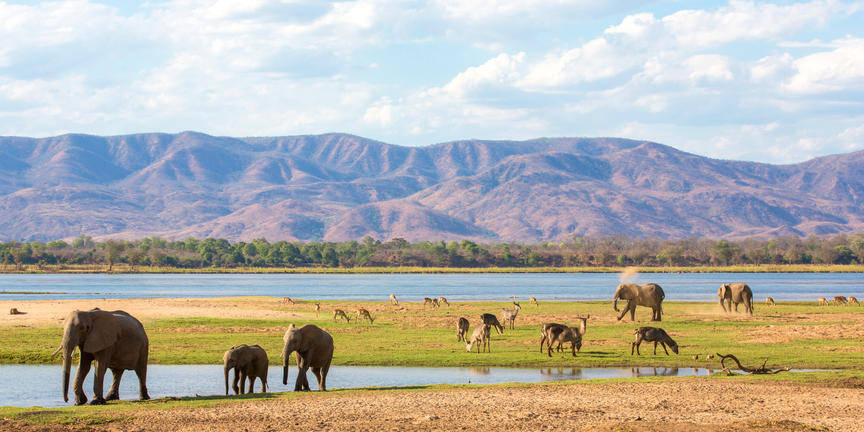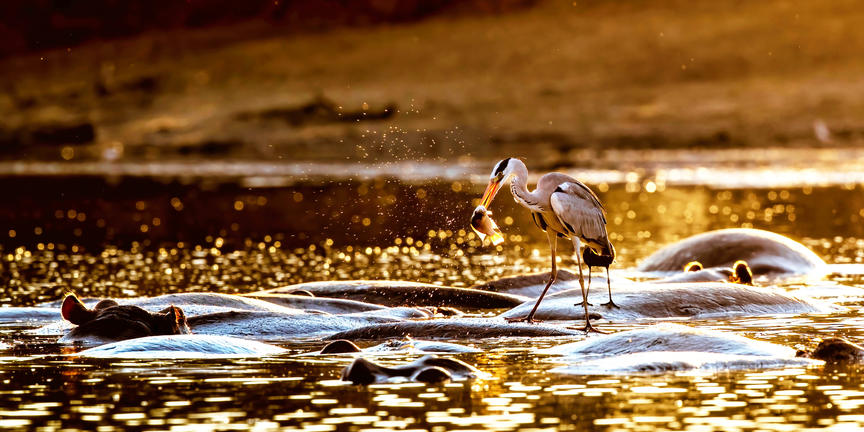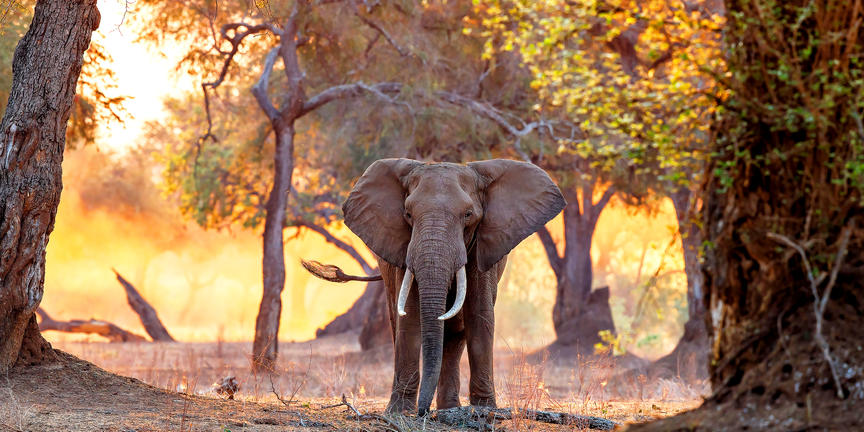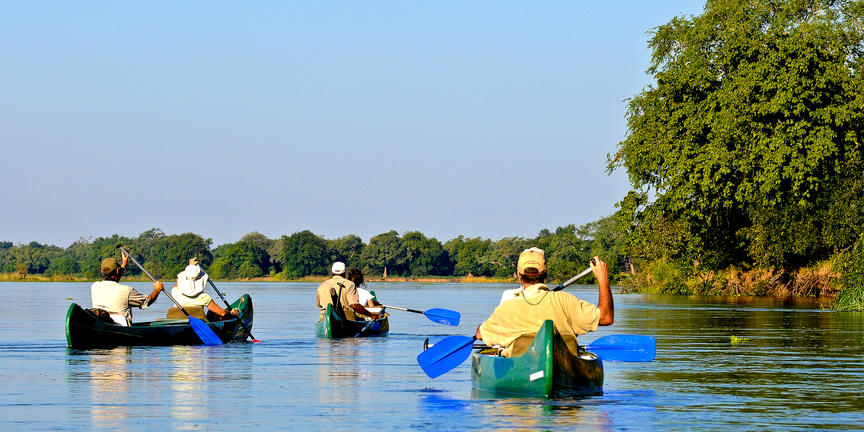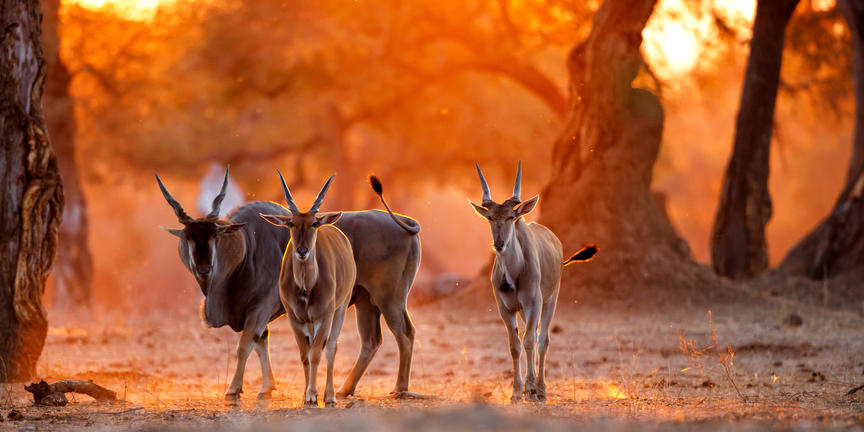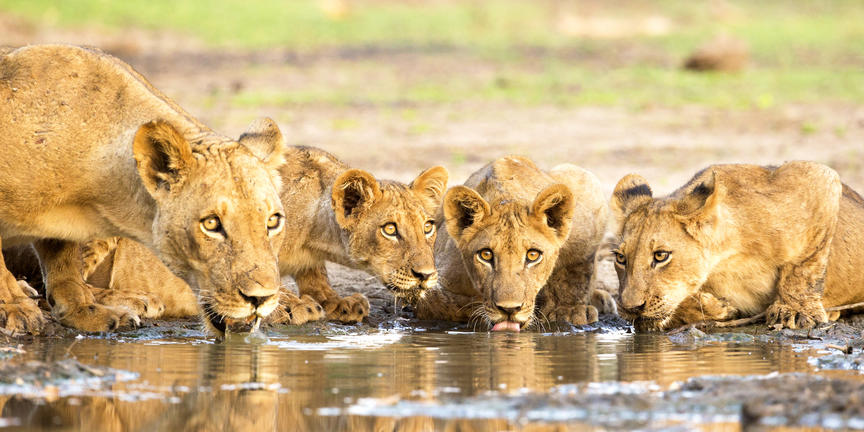Mana Pools National Park occupies a vast flood plain along the Zambezi River in northern Zimbabwe. The plains support a diversity of wildlife, the massive mahogany and acacia trees providing cover for all the plains species and the 2,000sq km of seasonally flooded river frontage, ox-bow lakes and pools providing permanent water for a large population of wildlife.
Covering a total area of about 10,500sq km of virtually inaccessible silty clay soil, Mana Pools is one of the last true wilderness areas in Africa. As the Zambezi River recedes each dry season, large pools and ox-bow lakes remain making a unique habitat jam-packed with wildlife, waterlife and birdlife.
Access to Mana Pools is limited to dry season safari drives along established routes; the rest is on foot or in a canoe and certainly not for the faint-hearted or the unfit: this is big game country and then some.
Why is Mana Pools a Designated UNESCO Natural World Heritage Site?
Mana Pools National Park meets three of the four required criteria for World Heritage Site designation by the UNESCO World Heritage Centre:
- to contain superlative natural phenomena or areas of exceptional natural beauty and aesthetic importance
- to be outstanding examples representing significant on-going ecological and biological processes in the evolution and development of terrestrial, fresh water, coastal and marine ecosystems and communities of plants and animals
- to contain the most important and significant natural habitats for in-situ conservation of biological diversity, including those containing threatened species of outstanding universal value from the point of view of science or conservation
Other well-known World Heritage Sites in southern Africa
- Victoria Falls (Natural, Zimbabwe)
- Matobo National Park (Cultural/Natural, Zimbabwe)
- Great Zimbabwe and Midlands (Cultural, Zimbabwe)
- Khami Ruins (Cultural, Zimbabwe)
- Cape Floral Region (Natural, South Africa)
- Robben Island (Cultural, South Africa)
- Drakensberg Park (Natural, South Africa)
- Twyfelfontein (Cultural, Namibia)
- Lake Malawi National Park (Natural, Malawi)
